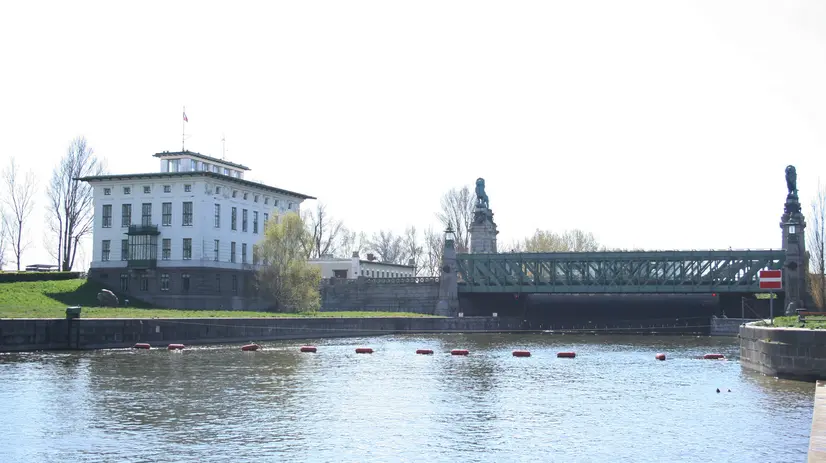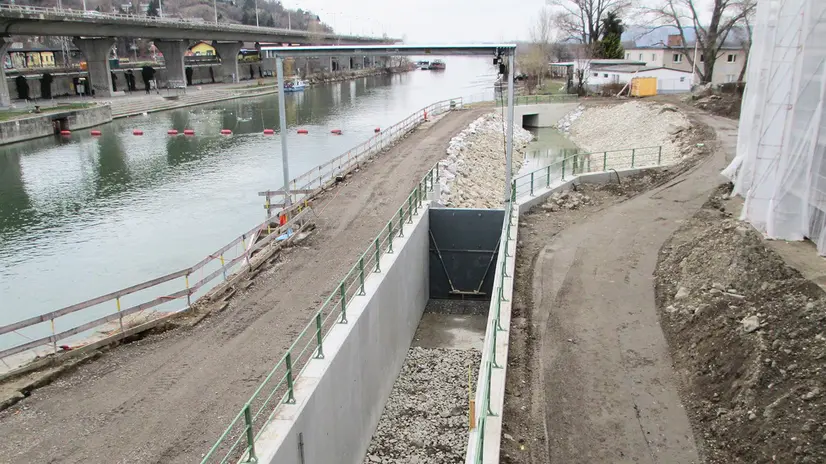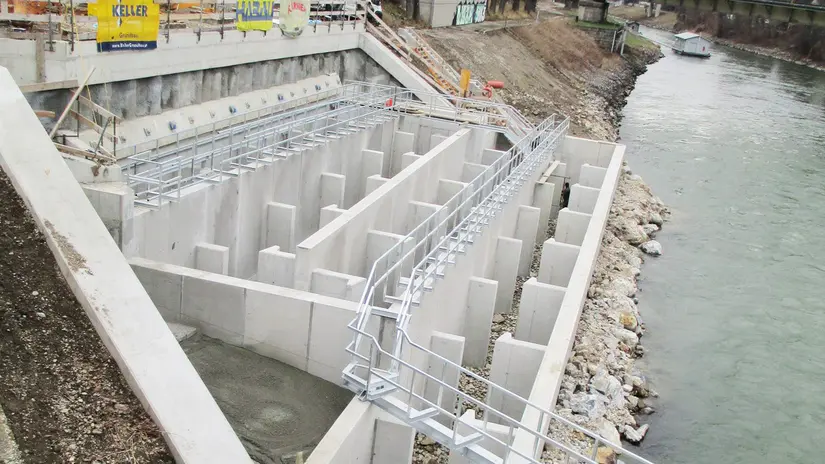From November 2015 until the beginning of 2017 a fish ladder of a special kind was built at the Brigittenauer Sporn, in the 20th Viennese district, right in the middle of the urban environment of the capital. The fish ladder Nussdorf combines two types of fish passes: a concrete channel with several adjoining basins („vertical slots“) in the tailwater of the weir and an open channel with near-natural embankments in the headwater of the weir. The fish ladder tunnels the historic "Schemerl" Bridge which was finalised in 1898.
It resolves the barrier of the weir and power plant Nussdorf and connects the two habitats of the Danube Canal and the Danube. Thus, for example the sturgeon can migrate upstream again at Nussdorf, in order to get to its spawning areas. Also various other aquatic animals and organisms need different riverine habitats for their natural life cycle. Fish ladders or passes thus are of crucial importance for the protection of species and the renaturation of constructed or significantly changed water bodies.
Ensuring that fish can migrate again reflects the objectives of and was done in accordance with the EU Water Framework Directive and the National Water Management Plan. The structural planning was based on the Guidelines for the Building of Fish Passages (BMLFUW, December 2012) for the Danube fish species catfish.
The building in detail
The overcome difference in height between headwater and tailwater is about 3.6 metres. For that purpose, 37 pools ("vertical slots") and a near-natural channel were built over a length of approx. 320 metres. The planning phase started in 2012; the official building permit was obtained in 2015. The structural implementation started in 2016, instigated by the Danube Flood Control Agency (DHK). After the finalisation of minor uncompleted works the fish ladder went into operation in April 2017.
The project is already concluded; the monitoring of the fish passage will be continued until 2021.
The project was a cooperation between the DHK and the VERBUND Hydro Power GmbH and was financially supported by the Federal Ministry of Agriculture, Forestry, Environment and Water Management, the Federal Ministry of Transport, Innovation and Technology, the City of Vienna, the Viennese Fishery Committee and the Lower Austrian "Landesfischereiverband".




